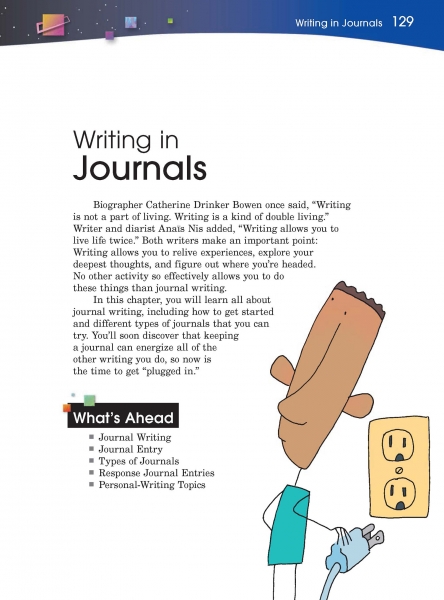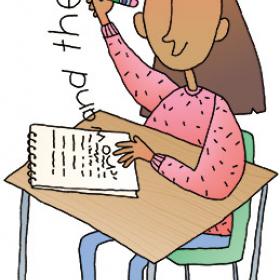Page 129 from

Start-Up Activity
Ask students to spend 3–5 minutes freewriting about this Anaïs Nin quotation: “Writing allows you to live life twice.” Have volunteers share their responses. Then have students count the number of words they wrote. Indicate that the greater number of words a person can write in a given time, the greater the fluency of the writing. Journals can help students gain fluency.
Read and discuss the introduction on page 129. Afterward, ask students about their previous journal-writing experiences and encourage them to keep journals.
Think About It
“A writer can get rusty just as an athlete can. It’s important to try to write something every day.”
—Nany Garden

Start-Up Activity
Ask students to spend 3–5 minutes freewriting about this Anaïs Nin quotation: “Writing allows you to live life twice.” Have volunteers share their responses. Then have students count the number of words they wrote. Indicate that the greater number of words a person can write in a given time, the greater the fluency of the writing. Journals can help students gain fluency.
Read and discuss the introduction on page 129. Afterward, ask students about their previous journal-writing experiences and encourage them to keep journals.
Think About It
“A writer can get rusty just as an athlete can. It’s important to try to write something every day.”
—Nany Garden


